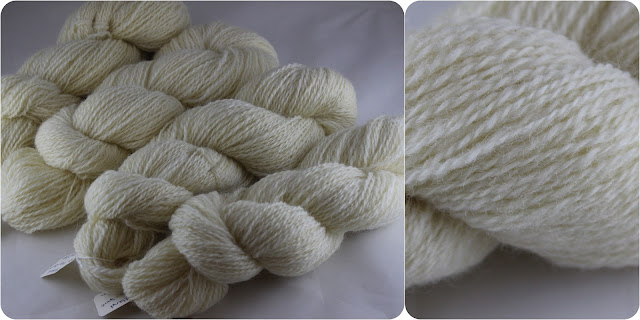Portland Sheep is one of the UK's oldest breeds of sheep and named after the Island of Portland in the English Channel where they were developed. Dating back to at least the 13th century they were developed from tan-faced sheep in the South West and believed to be closely related to the ancestral sheep from which the Dorset Horn was developed. They have retained their genetic integrity due to the fact the Island of Portland was once separated from the mainland by water but today the Island of Portland is accessible via a spit of gravel known as Chesil Beach.
They are a small breed of sheep with a tan face and legs that are wool free. They have a long tail and light coloured horns. Both sexes grow horns, although the males horns grow much larger. Lambs are born with reddish brown fleece which turn white or grey as they mature. The adult fleece is creamy white with some red, coarse kemp hairs particularly in the upper leg area.
They produce a medium size fleece of 1.5-2.5kg that is fine and relatively short, although the length can vary greatly. Staple length is 2.5-4 inches (6.5-10cm) and locks can be open with pointed tips or they can be blocky with square tips. As you will see further down, I had both types in the fleece that I purchased, which means that the fleece is not even or consistent throughout.
This fleece can be spun from teased locks, it can be picked carded or combed. Combing will remove most of the kemp, should there be any and it is a joy to spin. The warm creamy tone of the white will affect dye and this should be kept in mind when choosing what colour dye to use because should you choose pink you are likely to get a peach or coral colour, depending on the depth of your dye.
Yarns spun from Portland fleece are very versatile and suited for sweaters, socks, blankets and every day items.
 |
 |
| Top two photos shows long silky type locks Bottom photo shows the more blocky, square type locks |
 |
| Washed fleece, bottom photo shows a small amount of red kemp |







No comments:
Post a Comment